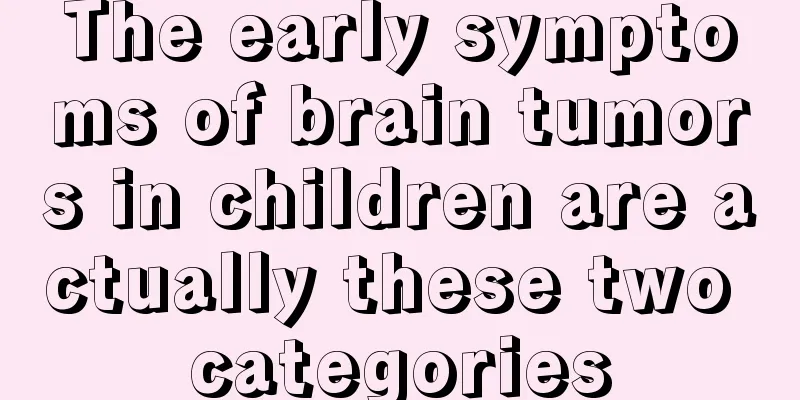The early symptoms of brain tumors in children are actually these two categories

|
Children are treasures in the hands of their parents, and they always hope that they can grow up healthy. However, for unknown reasons, the anterior fontanelle suddenly becomes full, the cranial sutures become dehiscent, the head circumference increases, and there is a crackling sound in the head. In addition, there are symptoms of brain tumor such as increased blood pressure, bradycardia, hyperactivity, irritability, and lack of energy. Most of them present a chronic or subacute progressive clinical course, and their clinical manifestations can be classified into two categories: intracranial hypertension and focal tumor symptoms: 1. Symptoms of intracranial hypertension These include headache, vomiting, and papilledema. Infants will not complain of headaches, and their main symptoms include a full anterior fontanelle, open cranial sutures, increased head circumference, and a crackling sound in the skull. The headache is intermittent at first, and may later become continuous with paroxysmal exacerbations, distributed throughout the brain or in the frontal and occipital areas. Headache and vomiting are often more severe in the early morning, and the headache may be temporarily relieved after vomiting. Increased intracranial pressure can also cause secondary optic atrophy and vision loss. Children often have symptoms such as high blood pressure, bradycardia, hyperactivity, irritability and lack of energy. If there is anisocoria or obvious impaired consciousness, tentorial hiatus hernia should be considered. If irregular breathing rhythm and neck stiffness occur, consider the possibility of foramen magnum hernia. 2. Local symptoms and signs caused by tumors
(1) Limb paralysis: Cerebral hemisphere tumors can cause hemiplegia with positive pyramidal tract signs, and brainstem tumors can cause crossed paralysis, that is, nuclear or subnuclear paralysis of the cranial nerves on the same side of the lesion, and supranuclear paralysis of the contralateral limbs. (2) Epileptic seizures: They occur in cerebral hemisphere tumors and may be focal or global. (3) Ataxia: unsteady gait, often accompanied by nystagmus, is common in cerebellar tumors. (4) Decreased vision and visual field loss: Craniosynostosis and other tumors in the sella turcica compress the optic chiasm, causing optic nerve atrophy and visual field loss. (5) Hypothalamic and pituitary dysfunction: Tumors in the sella turcica or the anterior horn of the third ventricle can cause symptoms such as growth retardation, precocious puberty, urinary complications or obesity. |
<<: What should I do if my child has itchy red bumps? 4 Ways to Take Care
>>: Why does my baby keep sticking out his tongue? The truth is this
Recommend
Why is the baby's lower eyelid red?
If the baby's lower eyelids are red, parents ...
Causes of vaginal adhesions in babies
When children are young, they will be stuffed wit...
Is it okay to burp your baby while he's asleep?
It is very normal for babies to hiccup in life. T...
Baby's limbs are twitching
In the process of taking care of the baby, parent...
Red blood streaks on children's faces
Children's skin is generally very delicate, f...
What to do if a little boy has a long foreskin
Now more and more parents are beginning to pay at...
What to do if your child has excessive liver fire
The main manifestation of liver fire in children ...
What causes knee pain in children?
Children are naturally more active, which makes t...
Should the newborn's nipples be squeezed?
For newborns, if there are elderly people in the ...
Teenagers' schedule
The work and rest time of each age group is diffe...
How long does it take for a newborn to be held upright?
When a newborn is just born, her developmental ch...
Characteristics of boy's development
When a child reaches the age of three or four, al...
What is the dosage of compound licorice oral solution for children?
Compound licorice oral solution can effectively h...
What diet should be provided for babies with diarrhea?
Every mother's heart is tied to her child. Wh...
What should I do if my child keeps having a fever?
Autumn is approaching us step by step. At this ti...









